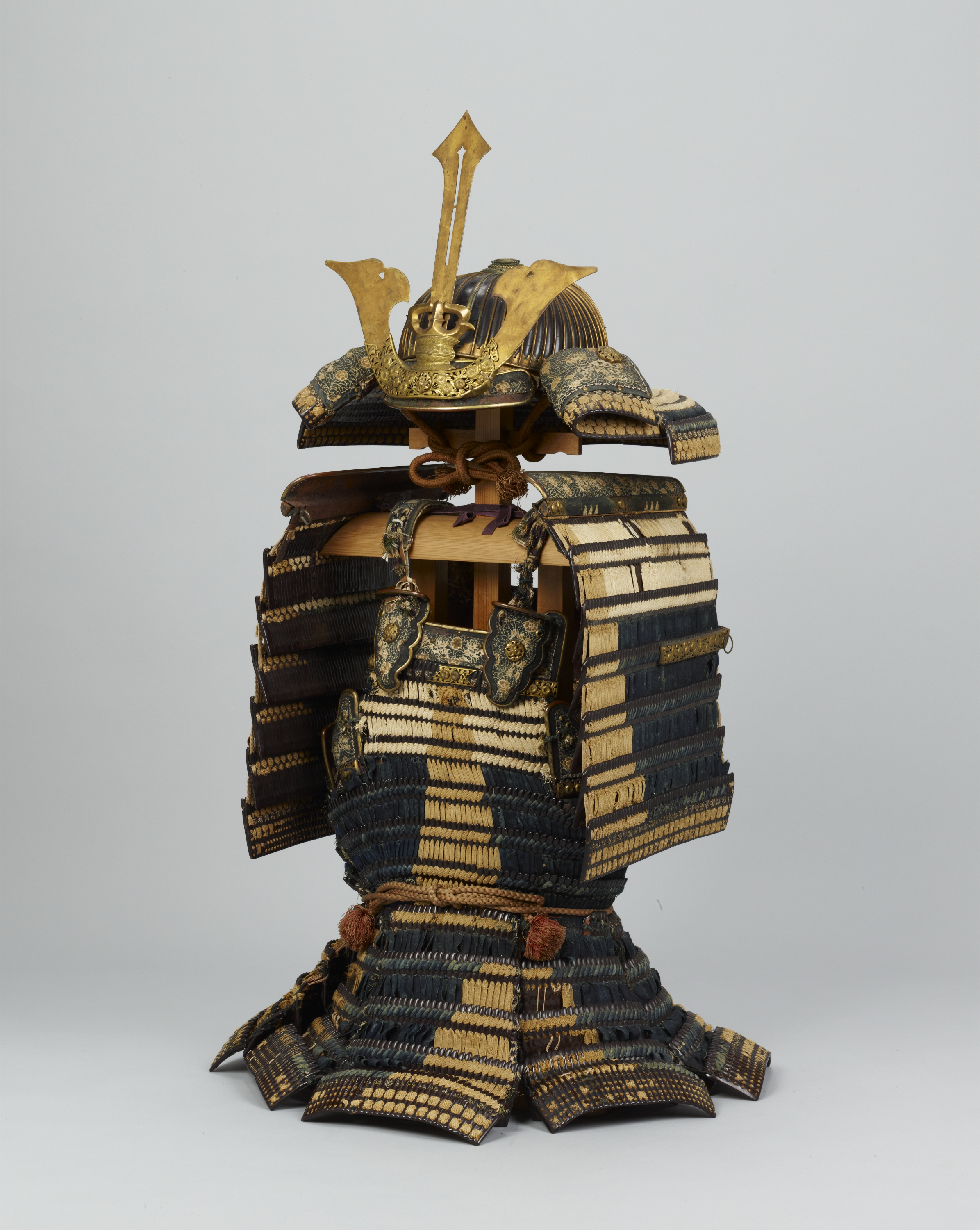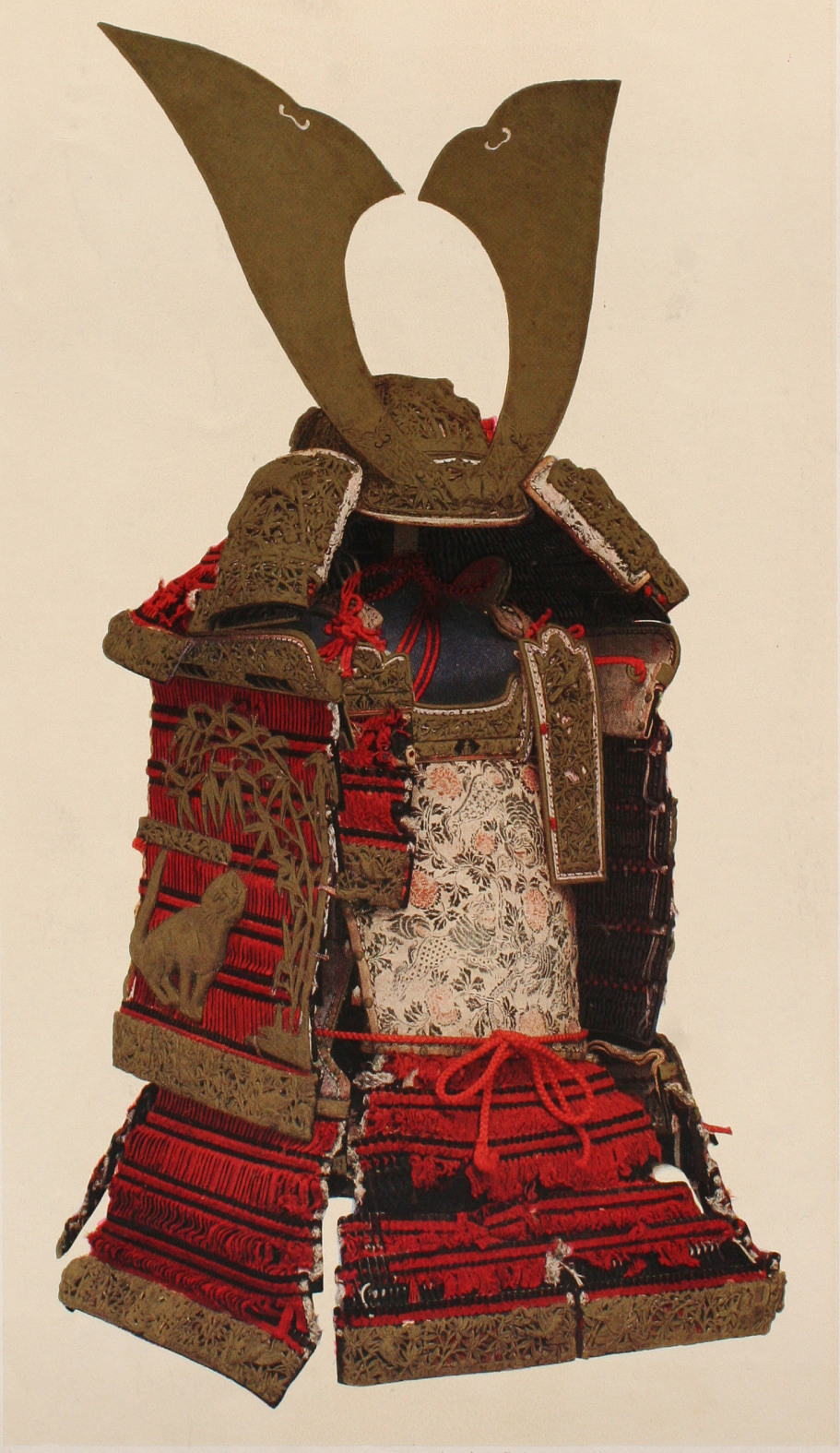|
Dō-maru
''Dō-maru'' (胴丸), or "body wrap", was a type of chest armour (''dou or dō'') worn by the samurai class of feudal Japan. ''Dō-maru'' first started to appear in the 11th century as an armour for lesser samurai and retainers. Like the '' ō-yoroi'' style it became more common in the Genpei War at the end of the 12th century. Description There were quite a number of similar styles and types of Japanese armor; the ''dō-maru'' is particularly defined by the fact that a ''dō-maru'' opens on the right side as opposed to the ''haramaki'' style which opened in the back and the ''ō-yoroi'' the cuirass of which is completely open on the right side requiring a separate plate (''waidate'') to cover the right side. The ''ō-yoroi'' was a heavy box like armour meant for use on horseback, and was expensive to make. The ''dō-maru'', like the ''haramaki'' had more skirt plates (''kusazuri'') than an ō-yoroi and was lighter, closer-fitting, and cheaper to create. The ''dō-maru'' was ... [...More Info...] [...Related Items...] OR: [Wikipedia] [Google] [Baidu] |
Samurai Armour
Scholars agree that Japanese armour first appeared in the 4th century, with the discovery of the cuirass and basic helmets in graves. During the ''Heian period'' (794-1185), the unique Japanese samurai armour ''ō-yoroi'' and ''dō-maru'' appeared.式正の鎧・大鎧 Costume Museum The Japanese cuirass evolved into the more familiar style of worn by the samurai known as the dou or dō, with the use of leather straps (nerigawa), and lacquer for weatherproofing. Leather and/or iron scales were also used to construct samurai armours, with leather and eventually silk lace used to ... [...More Info...] [...Related Items...] OR: [Wikipedia] [Google] [Baidu] |
ō-yoroi
The is a prominent example of early Japanese armor worn by the samurai class of feudal Japan. The term ''ō-yoroi'' means "great armor."(Mondadori, 1979, p. 507). History ''Ō-yoroi'' first started to appear in the 10th century during the middle and late Heian period, and came into widespread use in the Genpei War around the 12th century when the call for armor was at its peak. Significant aspects of this armor were designed for cavalry archers. The box shaped ''ō-yoroi'' was heavy and did not allow as much movement or flexibility as its counterpart the dō-maru, so the armor fell out of favor in the fifteenth century when samurai shifted to mostly infantry tactics.(Ogawa, 1989). For the most part the ''ō-yoroi'' was a rich man's armor and not used by lower ranking samurai. The armor was mainly worn by the higher ranking samurai on horseback. The lower ranking soldiers had armor that was similar to the ''ō-yoroi'', but had fewer components, was lighter, and lacked the dec ... [...More Info...] [...Related Items...] OR: [Wikipedia] [Google] [Baidu] |
List Of National Treasures Of Japan (crafts-others)
The term "National Treasure" has been used in Japan to denote cultural properties since 1897, although the definition and the criteria have changed since the introduction of the term. The crafts items in the list adhere to the current definition and have been designated National Treasures according to the Law for the Protection of Cultural Properties that came into effect on June 9, 1951. The items are selected by the Ministry of Education, Culture, Sports, Science and Technology based on their "especially high historical or artistic value". The list presents 132 entries from Classical to early modern Japan, spanning from the 7th century Asuka to the 18th century Edo period. The number of items is higher, however, since groups of related objects have been joined as single entries. The listed objects are of many types and include household goods, objects related to Buddhism, armour and harnesses. Some of the oldest objects were imported from China at the time. The listed items ... [...More Info...] [...Related Items...] OR: [Wikipedia] [Google] [Baidu] |
Samurai
were the hereditary military nobility and officer caste of medieval and early-modern Japan from the late 12th century until their abolition in 1876. They were the well-paid retainers of the ''daimyo'' (the great feudal landholders). They had high prestige and special privileges such as wearing two swords and ''Kiri-sute gomen'' (right to kill anyone of a lower class in certain situations). They cultivated the ''bushido'' codes of martial virtues, indifference to pain, and unflinching loyalty, engaging in many local battles. Though they had predecessors in earlier military and administrative officers, the samurai truly emerged during the Kamakura shogunate, ruling from 1185 to 1333. They became the ruling political class, with significant power but also significant responsibility. During the 13th century, the samurai proved themselves as adept warriors against the invading Mongols. During the peaceful Edo period (1603 to 1868), they became the stewards and chamberlains of th ... [...More Info...] [...Related Items...] OR: [Wikipedia] [Google] [Baidu] |
:Category:Japanese Words And Phrases ...
{{Commons Words and phrases by language Words Words Words A word is a basic element of language that carries an objective or practical meaning, can be used on its own, and is uninterruptible. Despite the fact that language speakers often have an intuitive grasp of what a word is, there is no consen ... [...More Info...] [...Related Items...] OR: [Wikipedia] [Google] [Baidu] |
Feudal Japan
The first human inhabitants of the Japanese archipelago have been traced to prehistoric times around 30,000 BC. The Jōmon period, named after its cord-marked pottery, was followed by the Yayoi period in the first millennium BC when new inventions were introduced from Asia. During this period, the first known written reference to Japan was recorded in the Chinese ''Book of Han'' in the first century AD. Around the 3rd century BC, the Yayoi people from the continent immigrated to the Japanese archipelago and introduced iron technology and agricultural civilization. Because they had an agricultural civilization, the population of the Yayoi began to grow rapidly and ultimately overwhelmed the Jōmon people, natives of the Japanese archipelago who were hunter-gatherers. Between the fourth to ninth century, Japan's many kingdoms and tribes gradually came to be unified under a centralized government, nominally controlled by the Emperor of Japan. The imperial dynasty established at ... [...More Info...] [...Related Items...] OR: [Wikipedia] [Google] [Baidu] |
Genpei War
The was a national civil war between the Taira and Minamoto clans during the late Heian period of Japan. It resulted in the downfall of the Taira and the establishment of the Kamakura shogunate under Minamoto no Yoritomo, who appointed himself as ''Shōgun'' in 1192, governing Japan as a military dictator from the eastern city of Kamakura. It followed a ''coup d'état'' by the Taira in 1179 with the removal of rivals from all government posts, and subsequently banishing them, and a call to arms against the Taira, led by the Minamoto in 1180. The ensuing Battle of Uji took place just outside Kyoto, starting a five-year-long war, concluding with a decisive Minamoto victory in the naval Battle of Dan-no-ura. However, it has been pointed out that the Battle of Ōshū in 1189 was the last battle during this period of civil war, as it completed Yoritomo's nationwide domination through the annexation of Northeast Japan. The name "Genpei" (sometimes romanized as ''Gempei'') comes fr ... [...More Info...] [...Related Items...] OR: [Wikipedia] [Google] [Baidu] |
Leather
Leather is a strong, flexible and durable material obtained from the tanning, or chemical treatment, of animal skins and hides to prevent decay. The most common leathers come from cattle, sheep, goats, equine animals, buffalo, pigs and hogs, and aquatic animals such as seals and alligators. Leather can be used to make a variety of items, including clothing, footwear, handbags, furniture, tools and sports equipment, and lasts for decades. Leather making has been practiced for more than 7,000 years and the leading producers of leather today are China and India. Animal rights groups claim that modern commercial leather making and the consumption of its products is unethically killing animals. According to the life-cycle assessment (LCA) report for the United Nations Industrial Development Organization, 99% of the raw hides and skins used in the production of leather derive from animals raised for meat and/or dairy production. Critics of tanneries claim that they engage in un ... [...More Info...] [...Related Items...] OR: [Wikipedia] [Google] [Baidu] |





